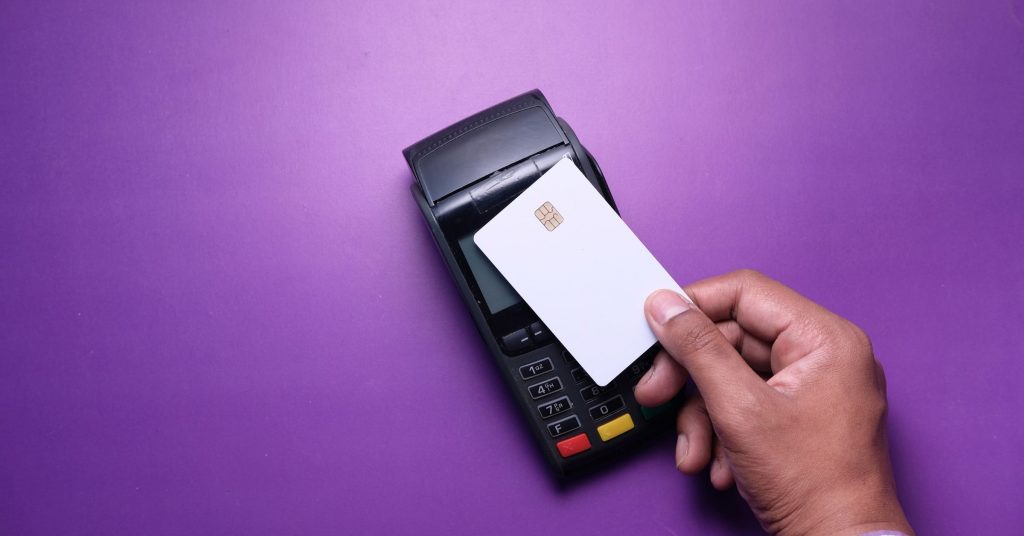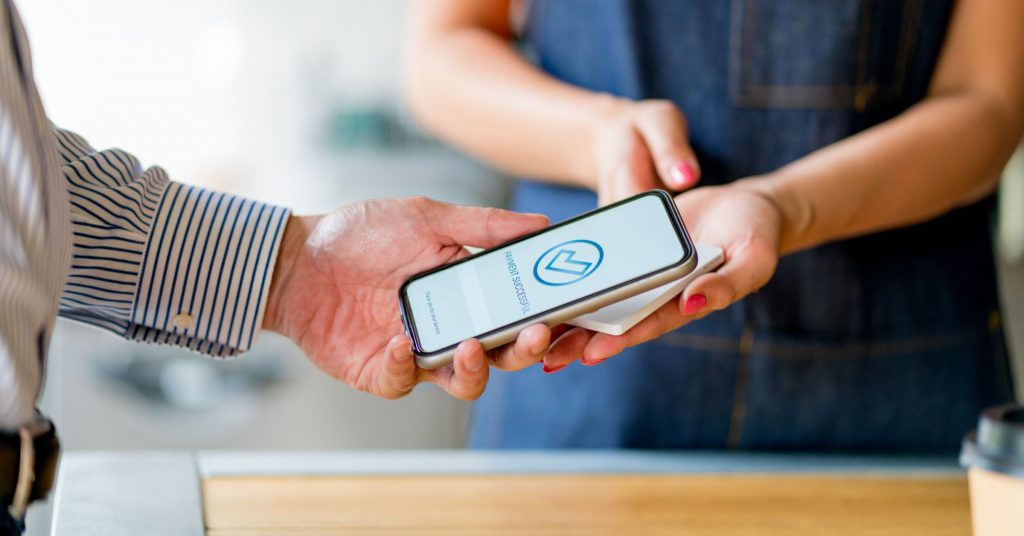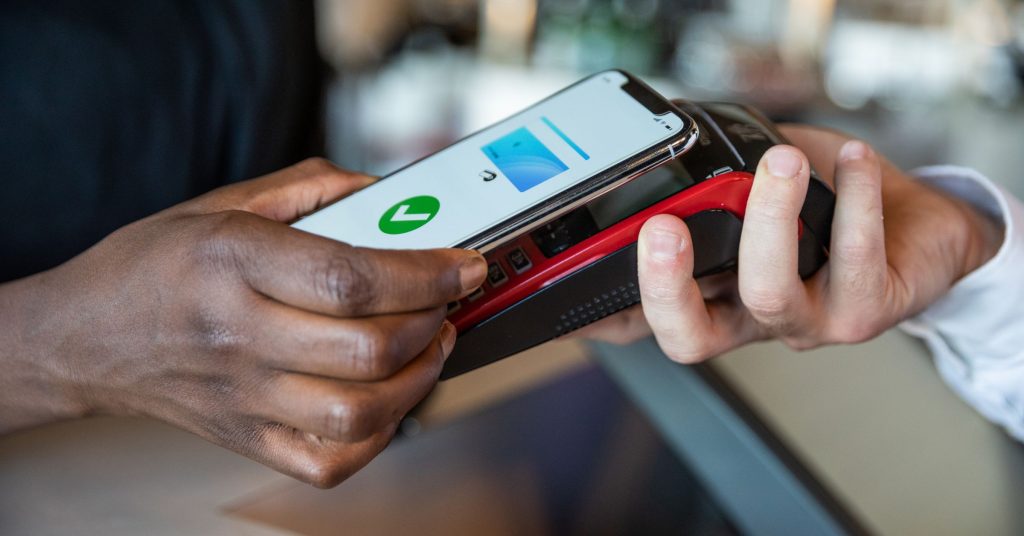Have you ever found yourself in a long queue at the checkout counter, impatiently waiting for your turn, only to see the person ahead of you swiftly tap their card and move on? That’s the magic of contactless payments, a revolution that’s rapidly changing the way we handle our finances.
In the age of instant gratification, where we expect everything at the click of a button (or a tap of a card), contactless payments have emerged as the frontrunner in the race to make transactions quicker, easier, and more efficient. But how did we get here? Let’s take a stroll down memory lane and explore the evolution of payments.
Remember the days when cash was king? Those crisp notes and jingling coins were once the lifeline of every transaction. Fast forward to today, and the landscape has dramatically shifted. The reign of cash is waning, making way for a new monarch: contactless payments.

What is Contactless Payment?
At its core, contactless payment is a method that allows consumers to make transactions without physically touching the point-of-sale terminal. Sounds futuristic, right? But it’s happening right now, in pockets, purses, and wristwatches around the world.
A Blast from the Past
To truly appreciate the marvel that is contactless payment, let’s hop into our time machine and travel back to 1995. Seoul, South Korea, witnessed the birth of the first-ever contactless card. But it wasn’t for shopping or dining out; it was a bus card. A humble beginning for a technology that would soon take the world by storm.
Fast forward to 2007, and the financial world was abuzz with a groundbreaking introduction by Barclaycard: the first contactless bank card. This wasn’t just a card; it was a promise of a future where payments were swift, secure, and seamless. The public, always eager for convenience, embraced this innovation with open arms. And why wouldn’t they? Gone were the days of fumbling for cash or painstakingly entering PINs. The future was contactless.
The Mechanics of Contactless Payments
Ever wondered how that little card or device in your hand communicates with a machine without any physical connection? It might seem like magic, but it’s a symphony of technology at play.
The Science Behind the Tap
Contactless payments rely on two primary technologies: Radio Frequency Identification (RFID) and Near-Field Communication (NFC). Think of them as the unsung heroes behind every tap, beep, and green light you see at the checkout counter.
RFID: This technology uses electromagnetic fields to identify and track tags attached to objects, including those nifty cards in your wallet. It’s like a conversation where the card says, “Hey, I’m here!” and the machine responds, “Gotcha!”
NFC: A subset of RFID, NFC allows two devices to communicate when they’re within 4 cm of each other. It’s the equivalent of two old friends recognizing each other in a crowd and having a quick chat.
When you tap your card or device, it sends a signal to the point-of-sale terminal. This signal contains the necessary payment information, encrypted for security. The terminal then processes this information, and voilà, your payment is made!
A Timeline of a Tap
- Initiation: You tap your card or device on the terminal.
- Communication: The card/device and terminal exchange encrypted information.
- Verification: The terminal verifies the payment details with the bank.
- Completion: A beep, green light, or checkmark signals that the payment is successful.
It’s a process that takes mere seconds, but behind those seconds is a marvel of technology and innovation.

The Global Impact of Contactless Payments
The world is tapping away, and the numbers are here to prove it. From the bustling streets of Tokyo to the quaint cafes of Paris, contactless payments are making their mark.
By the Numbers
In 2021, Europe alone saw a whopping 114.2 billion non-cash payments, marking a 12.5% increase from the previous year.
The global contactless payment market, valued at $13.23 billion in 2020, is projected to skyrocket to $51.07 billion by 2026.
These figures aren’t just numbers; they’re a testament to a global shift in payment preferences. The convenience, speed, and security offered by contactless payments are resonating with consumers worldwide, driving this exponential growth.
Reed More on APM:
Breaking Barriers: How Alternative Payment Methods Are Reshaping E-commerce in 2023
Cryptocurrency: 7 Amazing Benefits of the Future’s Payment Method!
The Evolution of Contactless Payments
Change is the only constant, and the realm of contactless payments is no exception. From its inception as a bus card in Seoul to its current global dominance, the journey of contactless payments is a tale of innovation and adaptation.
Milestones in the Journey
1995: Seoul introduces the world’s first contactless card for bus travel.
2007: Barclaycard changes the game by issuing the first contactless bank card.
Today: From watches to phones, a myriad of devices now support contactless payment functionality.
The rapid evolution of contactless payments is a testament to the world’s appetite for convenience and efficiency. As technology continues to advance, who knows what the future holds? Perhaps a day when a mere thought can process a payment? Only time will tell.

Advantages of Contactless Payments
In a world where time is money, and convenience is king, contactless payments have emerged as the crown jewel of transaction methods. But what makes them so special? Let’s dive into the myriad benefits that have made tapping the new norm.
Speed and Convenience
Quick Transactions: Gone are the days of swiping, inserting, and entering PINs. A simple tap, and you’re good to go. On average, contactless payments are processed up to 10 times faster than traditional methods.
No More Queues: Faster transactions mean shorter lines. Whether it’s your morning coffee run or grocery shopping, contactless payments ensure you’re in and out in a jiffy.
Hygiene
Touch-free Transactions: In a post-pandemic world, minimizing physical contact has become paramount. Contactless payments offer a hygienic alternative, ensuring both safety and peace of mind.
Enhanced Security
Unique Encryption: Every transaction comes with its unique encryption, making it incredibly challenging for fraudsters to intercept or duplicate transaction details.
No Direct Access: Since the card never leaves your hand, there’s zero chance of it being cloned or misused during the transaction.
User Experience
Seamless Shopping: With quicker checkouts and reduced wait times, the overall shopping experience becomes smoother and more enjoyable.
Loyalty Programs: Many contactless payment systems come integrated with loyalty programs, offering rewards, discounts, and perks, making every tap a little more rewarding.
Operational Efficiency for Businesses
Higher Transaction Volumes: Faster checkouts mean businesses can serve more customers in less time, boosting sales and profits.
Reduced Cash Handling: With more people opting for contactless, businesses can cut down on cash handling, reducing risks and operational costs.

Disadvantages of Contactless Payments
While contactless payments are undeniably convenient, they aren’t without their challenges. It’s essential to be aware of potential pitfalls to make informed decisions.
Acceptance Limits
Not all merchants have hopped on the contactless bandwagon. Especially in remote areas, acceptance can be spotty.
Infrastructure investment can be a barrier for some small businesses.
Transaction Limits
Most banks have set a limit for contactless transactions without a PIN. While this is a security feature, it can be a hindrance for larger purchases.
These limits vary by country and bank, so it’s essential to be aware of your card’s specific restrictions.
Security Concerns
The very feature that makes contactless convenient, no PIN for small amounts, can be a security concern if the card is lost or stolen.
While the risk is minimal, there’s always a fear of electronic pickpocketing or skimming.
Potential for Overspending
The ease of tapping can sometimes lead to impulse purchases.
Without the tactile feedback of cash leaving your hand, it’s easy to lose track of spending.
Also read:
Top Trends And Innovations of Credit Card Acquiring in 2023
Card Acquiring 101: 7 Essential Steps to Understand How It Works!
Cryptocurrency: 7 Amazing Benefits of the Future’s Payment Method!

Addressing Security Concerns
With great convenience comes great responsibility. While contactless payments are secure, it’s crucial to be proactive about safety.
EMV Chip Encryption
The EMV chip in contactless cards generates a unique code for every transaction, making it nearly impossible for fraudsters to use the data for subsequent transactions.
Lost or Stolen? Act Fast!
If you misplace your card or suspect unauthorized use, report it immediately. Most banks offer a quick freeze feature via their apps or customer service.
Regularly Monitor Your Accounts
With mobile banking apps, it’s easier than ever to keep an eye on your transactions. Regular monitoring can help spot any anomalies.
Contactless Payments Around the World
As the sun never sets on the British Empire, so does the contactless wave seem to touch every corner of the globe. From the bustling markets of Bangkok to the serene cafes of Vienna, the tap-and-go culture is gaining momentum.
A Global Snapshot
Europe: Leading the charge, with countries like the UK, Sweden, and Norway seeing over 50% of transactions being contactless. The EU’s €50 limit ensures a balance between convenience and security.
Asia: Japan’s Suica and Pasmo cards, initially designed for transit, are now accepted at numerous locations. Meanwhile, in India, the UPI (Unified Payments Interface) system is revolutionizing contactless mobile payments.
North America: The USA, initially slow to adopt, is catching up fast, with a projected 56% increase in contactless payments by 2025. Canada, on the other hand, has been a forerunner in this domain.
Australia: With over 80% of face-to-face Visa transactions being contactless, Australia is a significant player in the contactless arena.
Factors Driving Global Adoption
Consumer Demand: The convenience of contactless is universally appealing.
Technological Advancements: As tech evolves, so does the ease and security of contactless payments.
Government Initiatives: Many governments are promoting cashless economies for transparency and efficiency.
Pandemic Push: The recent global pandemic has accelerated the shift towards contactless due to hygiene concerns.

The Future of Contactless Payments
As we stand on the precipice of a digital revolution, the horizon of contactless payments gleams with promise and potential.
Predictions about future growth and acceptance
Exponential Growth: With the convenience and security they offer, contactless payments are poised for massive global growth. By 2026, the market is projected to surpass $50 billion.
Universal Acceptance: As more merchants upgrade their systems, it’s predicted that contactless will become the default payment method in many regions.
The rising role of mobile payment systems
Smartphone Surge: With smartphones becoming ubiquitous, mobile wallets like Apple Pay and Google Pay are set to dominate the contactless landscape.
Beyond Payments: Mobile payment systems are evolving into comprehensive financial tools, offering services like expense tracking, loyalty rewards, and instant loans.
Integration with Other Tech: As the Internet of Things (IoT) expands, expect your mobile payment systems to integrate seamlessly with other smart devices, from your car to your refrigerator.
The Environmental Impact of Contactless Payments
In an age where sustainability is at the forefront of global discussions, it’s worth considering the environmental implications of our payment choices. Does going contactless also mean going green?
Reduced Need for Physical Currency
Less Paper, Less Metal: With the rise of contactless payments, the demand for physical currency, especially coins, has decreased. This reduction means fewer trees cut for paper bills and less metal mined for coins.
Decreased Transportation Footprint: Transporting currency, especially coins, is heavy and requires significant energy. As the need for physical money decreases, so does the carbon footprint associated with its transportation.
Energy Consumption
Digital Infrastructure: While contactless payments reduce the need for physical currency, they rely on digital infrastructure, which consumes energy. Data centers, cloud services, and the technology supporting digital transactions all have an energy cost.
Balancing Act: However, when compared to the environmental impact of mining, minting, and transporting physical currency, the energy consumption of digital infrastructure might be more sustainable in the long run.
Frequently Asked Questions (FAQ)
Navigating the world of contactless payments can sometimes bring up a plethora of questions. Let’s address some of the most pressing queries that users often have.
How do I set up contactless payments?
Setting up contactless payments is a breeze:
For Cards: Most banks automatically issue contactless cards these days. If your current card isn’t contactless, you can request a replacement from your bank.
For Mobile Devices: Download your bank’s app or a popular mobile wallet like Apple Pay, Google Pay, or Samsung Pay. Link your bank account or card, and you’re good to go!
Wearables: Devices like smart watches often have payment functionalities. Pair them with your mobile device, set up through the relevant app, and tap away!
How effective are the security measures?
Contactless payments are designed with robust security in mind:
Unique Encryption: Every transaction uses a distinct code, rendering stolen data useless.
Transaction Limits: To prevent large unauthorized transactions, there’s often a cap on contactless payments without PIN verification.
Regular Updates: Banks and payment providers continuously update security protocols to stay ahead of potential threats.
Where are contactless payments accepted?
Almost everywhere! From supermarkets, cafes, and restaurants to public transport and vending machines. Look for the contactless symbol (four curved lines, similar to a Wi-Fi symbol) at payment terminals.
What should I do if my contactless device is lost or stolen?
Immediate Action: Report the loss to your bank or payment provider right away. They can temporarily freeze or deactivate your card or account.
Track and Lock: If it’s a mobile device, use tracking services like “Find My iPhone” or “Google Find My Device” to locate and lock your device remotely.
Stay Vigilant: Monitor your transaction history for any unauthorized payments and alert your bank if you spot any.
Conclusion
As we reach the end of this comprehensive guide to contactless payments, it’s time to reflect on what we’ve uncovered. From a simple bus card in Seoul to a global phenomenon, the journey of contactless payments is a testament to human innovation and adaptability.
Contactless payments have struck a chord with the masses, harmonizing the melody of convenience with the rhythm of security. It’s a dance that we’re all part of, swiping, tapping, and clicking our way through daily life.
Borders and boundaries mean little to the contactless wave. It’s a universal language, spoken in the tap of a card, the beep of a terminal, and the smile of a satisfied customer. From the bustling markets of Asia to the sophisticated boutiques of Europe, contactless is the currency of choice.
The future is a canvas, and contactless payments are painting a picture filled with possibilities. Biometrics, IoT, cryptocurrencies – the horizon is aglow with potential. As technology evolves, so will our ways of transacting, always striving for better, faster, and more secure methods.
So, dear reader, the next time you find yourself at a checkout counter, remember that you’re not just making a payment; you’re part of a story, a global narrative of progress and innovation. Embrace the tap, enjoy the convenience, and tap into the future of payments.
Discover the Future with ExpoNovum!
Dive into innovation. Start your journey with us today!